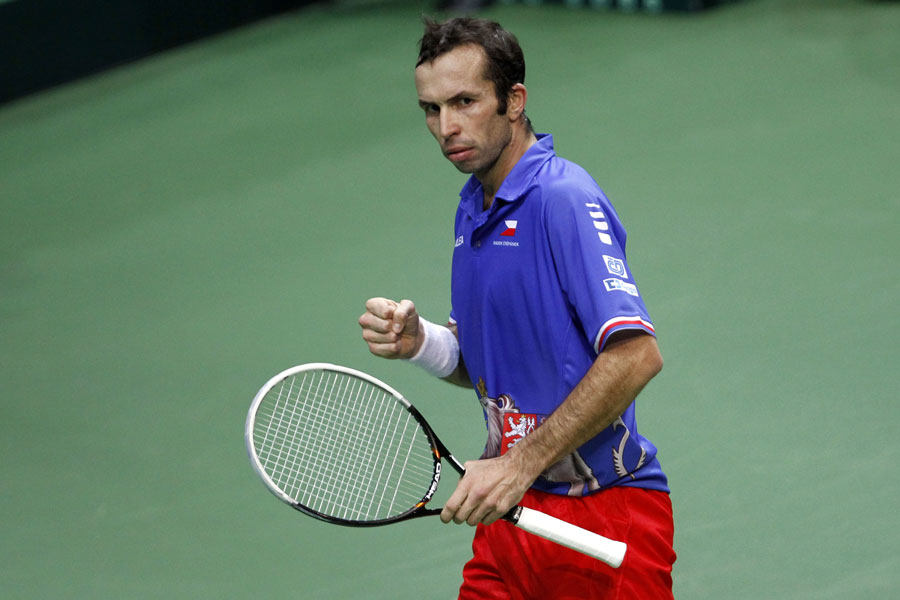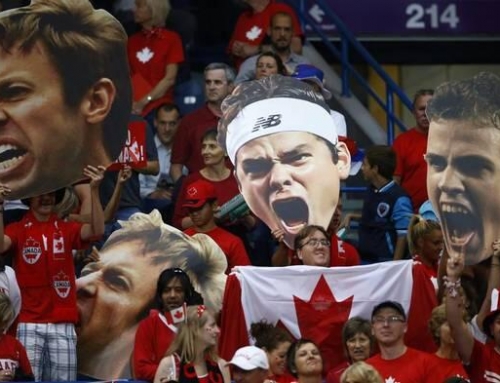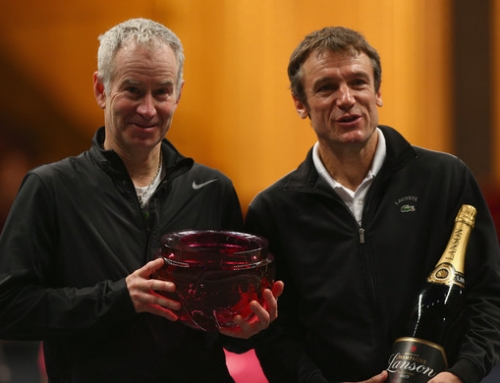 And this is why tennis pundits, especially American tennis pundits, should consider writing for some other sport, like curling.
And this is why tennis pundits, especially American tennis pundits, should consider writing for some other sport, like curling.
For years, American tennis commentators–a rather obscure lot–had been more than happy to bully the Davis Cup. Let’s make it more like the World Cup, they said. We can’t see top pros like Federer and Nadal play Davis Cup. Hold it in one location. Play it once in four years. It doesn’t even bother them the US has hardly won the Davis Cup in the last decade.
The Czechs were capitalizing on Davis Cup being playing at home at the right time. Tomas Berdych had his third year of solid tennis play. Berdych showed talent when he upset Roger Federer back in the 2004 Olympics. He had chances of upsetting Federer in an Australian Open a few years ago. He had been considered talented, yet inconsistent.
The Czechs had been here before. Back in 2009, they also played Spain in the finals, but it was in Spain, on clay. And, in 2009, Spain had Rafael Nadal. Nadal opened up that series with a thumping of Tomas Berdych. Recall 2009 was the year that Nadal was upset by Soderling at the French Open, but by the end of the year, he was back to playing. Stepanek pushed Ferrer to 5 sets, but Ferrer of 2009 was a different player than Ferrer of 2012 who is coming off his best year. Berdych and Stepanek then lost the doubles and were swept 3-0. The Czechs put in their backups and lost 5-0.
At the time, Stepanek was ranked 12th and Berdych was 20th, so Stepanek was actually the Czech number 1, so it was Berdych who played Nadal in the initial match (which pits the number 1 of one team against the number 2 of the other team).
Because Davis Cup switches venue on every meeting and the two teams had not met since 2009 back in Barcelona, the Czechs were hosting the tie. And, it turns out, despite the World Tour Finals being played in the O2 arena, the Czechs have their own O2 arena, and that’s where they hosted the finals.
Unlike 3 years ago where Stepanek was still playing very good ball and Berdych had still been trying to fulfill his talent, this time around, it was Berdych that was the top ten player and Stepanek whose rank had slipped to 37 in the world. Berdych had to shoulder the responsibility of winning. The key lay primarily in beating Almagro and winning doubles.
Berdych had taken to taunting the Spaniards calling Almagro the weak link and saying the doubles team had better practice. However, he had nothing to say about Ferrer who is coming off his best year. Despite Ferrer having played for nearly a month straight, he still seems as strong as usual. The Czechs knew that Ferrer was more than capable of beating both the Czechs, so Berdych had to win over Almagro and he had to win the doubles match.
This year, Stepanek went back to playing doubles and paired with one of the most successful players ever in Leander Paes. Stepanek had the advantage of playing Granollers-Lopez in London. He had contemplated not playing in the finals at all because he had some issues with his knees, but Stepanek probably felt that getting doubles practice with the best players of the world was good practice for the Davis Cup finals. Certainly doubles would be less tiring than playing singles.
After Day 1, the Czechs and Spaniards had split matches as expected. Ferrer beat Stepanek, while Berdych needed 5 sets to beat Almagro. This was of some concern because the Czechs only have two players that play singles and doubles. Spain, for example, have always had specialized doubles. Neither Ferrer nor Nadal have had to play doubles (in recent years) for Spain, although both have had some success (Ferrer and Lopez did quite well in the Olympics and Nadal has played with Marc Lopez and won titles).
On Day 2, the Spaniards got off to a good start winning the opening set, but with Stepanek cheering the team on, the Czechs came back and claimed the next 3 sets. Some felt the Spanish duo, Marcel Granollers and Marc Lopez, were still on a high after winning the year-end championship in doubles.
Day 3 starts with the two number 1’s facing each other, in this case, Berdych against Ferrer. Straight off the bat, it was clear Ferrer wanted to run Berdych ragged. Ferrer was hugely on form, not only off the ground, but also hitting aces. Much like Nadal, who is tough enough without a big serve, Ferrer showed he has a tricky serve, and it paid off.
With Berdych running ragged and unable to consistently impose on his own serve, Ferrer got off to big leads taking the first two sets 62 and 63. Ferrer even had a break early in the third set when Berdych finally managed a break and tied it up, but lost the break as Ferrer clinched the third set, 75.
The Czechs had felt that Almagro was the weak link. The one fortunate aspect was that Stepanek and Almagro had played each other pretty close the last few times they met, so they felt Stepanek could, in theory, keep up with Almagro. The one issue was that Stepanek had also played singles and doubles, but because he was crushed by Ferrer, he wasn’t going to be fatigued.
It was up to Stepanek to try to take the Cup.
You can count, on one hand, top players that play serve and volley. They would mostly be Radek Stepanek and Michael Llodra. It may be no surprise that both players are over 30 years of age. Even Mardy Fish, who was noted for playing net, rarely plays net anymore, except as an occasional surprise.
Stepanek said he wanted to play aggressive tennis and get to net. He played a lot of shots up the middle to cut off the angles from Almagro, and then went for big backhands either crosscourt, inside out, or down the line. Almagro, for his part, seemed to struggle with nerves. One reason he doesn’t play so well on fast courts, despite a big serve and a big game is his return game. Time and again, he struggled with Stepanek’s serve, serves that Ferrer got back more frequently.
Stepanek got a break in the first set and got out to a 6-4 win. The second set went to a tiebreak which Stepanek took 7-0. In the third set, Stepanek had a 0-40 game where he had chances to break open the match against Almagro, but Almagro saved that game and eventually broke Stepanek to take the third set. Stepanek had numerous break chances, but found it hard to break. However, early in the fourth set, Stepanek finally broke early, and then held serve all the way through. Stepanek even had match point on Almagro’s serve, but Almagro came back.
Stepanek capitalized on his scrambling abilities, getting balls back and goading Almagro into errors of which he had plenty.
On this, the 100th Davis Cup final, Stepanek became the first player to win a 5th rubber over the age of 30 since 1912.
And so the timing was just right. Stepanek might be able to play a few more years, but the likelihood is that this was the last, best chance for the Czechs to win the Davis Cup.
It was such a big deal that the Czechs invited the entire Czech team from 1980, the last time they won. Thus Ivan Lendl was there as was Tomas Smid and many of the others that put Czech tennis on the map some 30 years ago.
Congrats to the Czech Republic!




![[Davis Cup, QF, Day 3] Raonic wins over Seppi, clinches tie to move to semis](https://www.essentialtennis.com/wp-content/uploads/2013/04/20130407milos-500x383.jpg)
![[Davis Cup QF, Day 2] North American teams go the distance in doubles](https://www.essentialtennis.com/wp-content/uploads/2013/04/20130406serb-500x383.jpeg)
![[Davis Cup, 1R] Sam Querrey wins fifth rubber to advance US past Brazil](https://www.essentialtennis.com/wp-content/uploads/2013/02/20130203sam-500x383.jpg)
